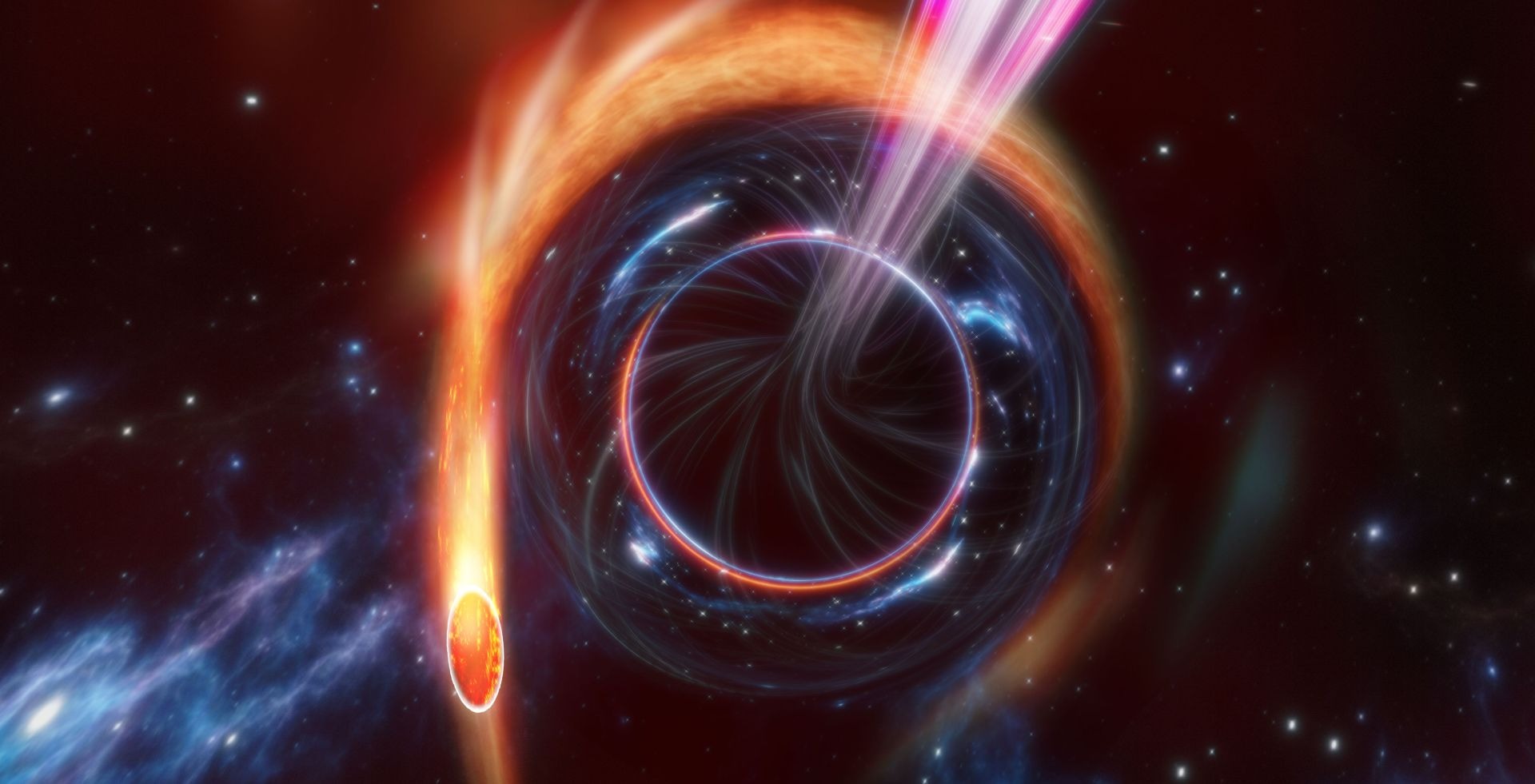A team of physicists, when modeling the event horizon, was able to observe the equivalent of what we call Hawking radiation — particles born as a result of perturbations of quantum fluctuations caused by the rupture of a black hole in space-time. The discovery may help scientists resolve the contradictions between two irreconcilable frameworks for describing the Universe: General relativity and quantum mechanics.

Black holes are useful here – the most amazing and extreme objects in the universe. These massive objects are so dense that at a certain distance from the center of mass of the black hole, even light is not able to escape from their gravitational trap. This distance, which varies depending on the mass of the black hole, is called the event horizon. When an object crosses the boundary, we can only imagine what happens, since nothing comes back from the depths of black holes.
Stephen Hawking’s Assumption
In 1974, scientist Stephen Hawking suggested that the interruption of quantum fluctuations caused by the event horizon led to a type of radiation very similar to thermal radiation. If this Hawking radiation exists, it is too weak for us to detect it with modern instruments. Perhaps we will never even distinguish it from the “hissing” static of the Universe. But we can study its characteristics by creating analogs of a dark hole in the laboratory.
Artificial analogues of black holes have been created before. But now a team led by Lotte Mertens from the University of Amsterdam in the Netherlands has done something new. A one-dimensional chain of atoms served as a way for electrons to “jump” from one position to another. By adjusting the ease with which this jump can occur, physicists may have caused the disappearance of certain properties, in fact creating a kind of event horizon that prevents the wave-like nature of electrons. The effect of this artificial event horizon caused an increase in temperature that corresponded to theoretical expectations regarding an equivalent system of black holes, and only when part of the chain went beyond the event horizon. This may mean that the entanglement of particles crossing the event horizon plays an important role in the creation of Hawking radiation.
Simulation of a black hole
The simulated Hawking radiation was only thermal for a certain range of jump amplitudes and in models that began with simulating a kind of space-time that was considered “flat”. This indicates that Hawking radiation can be thermal only in a number of situations, as well as when there is a change in the distortion of space-time due to gravity.
The simplicity of reproducing this experiment will allow other scientists to use it in a wide range of experimental settings, the researchers say.
Earlier we reported on how a mysterious flare from outer space was caused by a star “eaten” by a black hole.
According to Physical Review Research.
Follow us on Twitter to get the most interesting space news in time
https://twitter.com/ust_magazine

